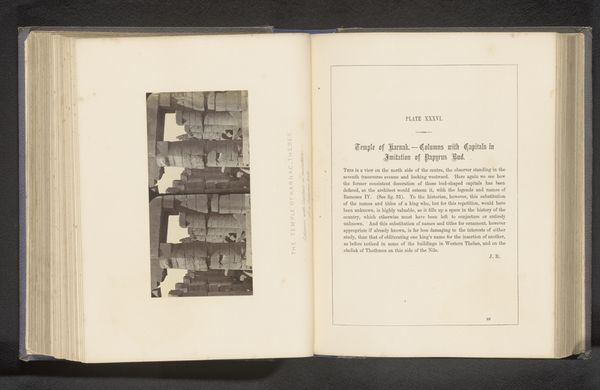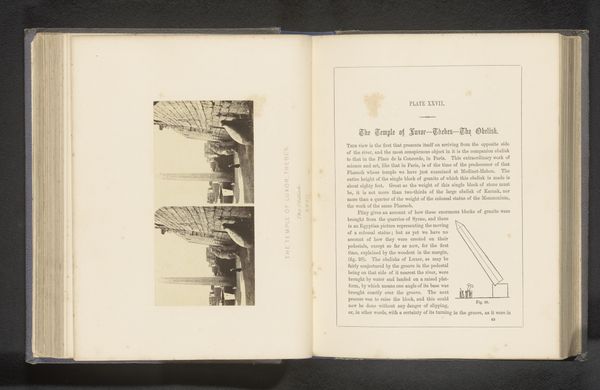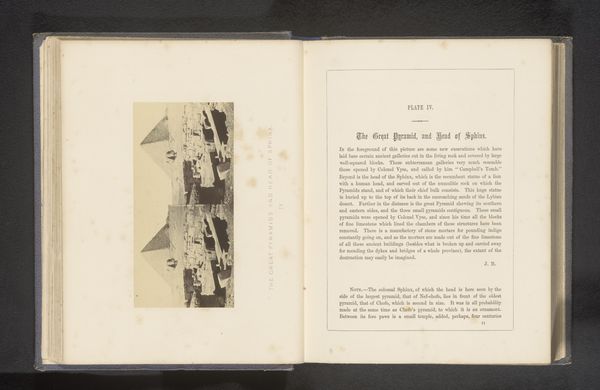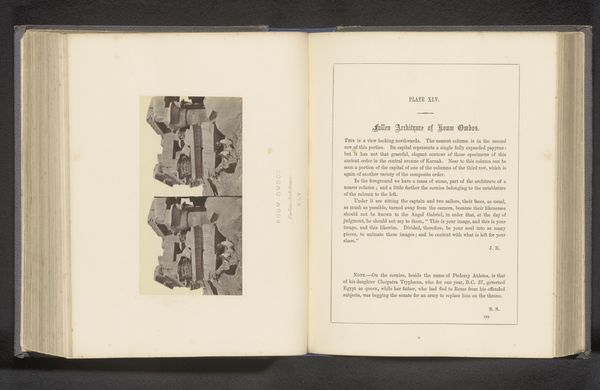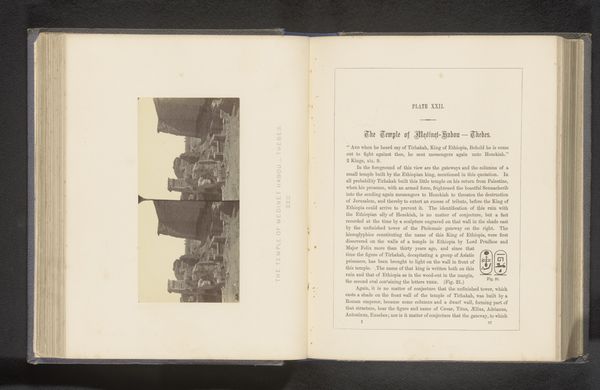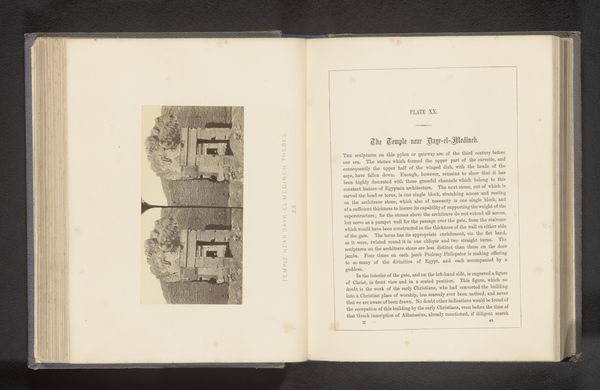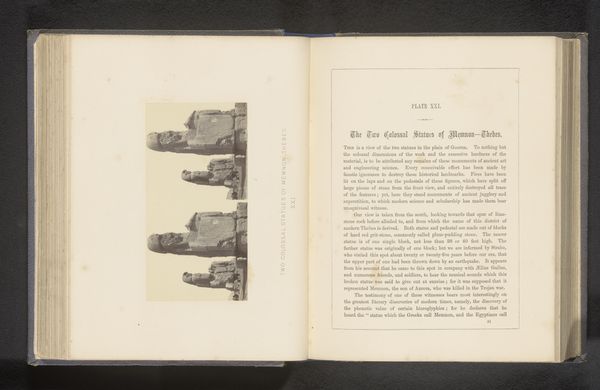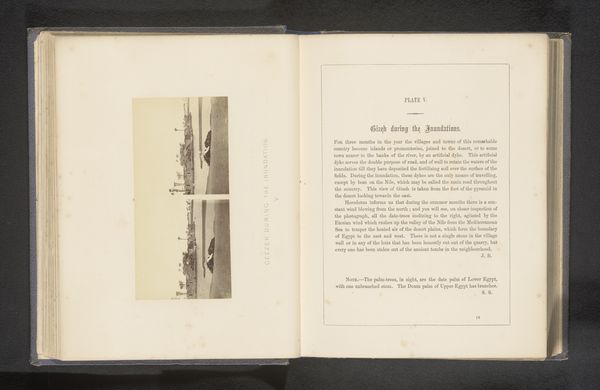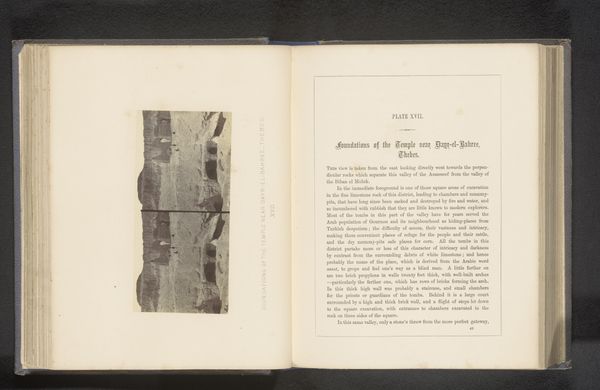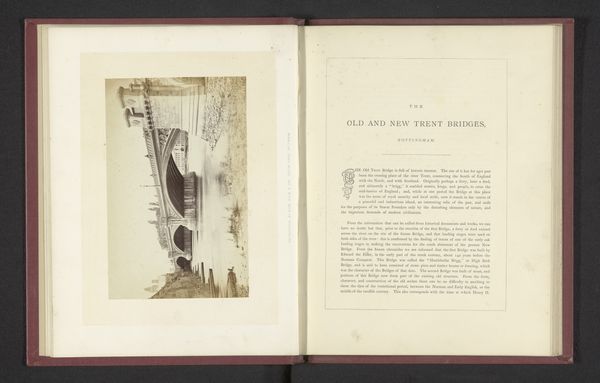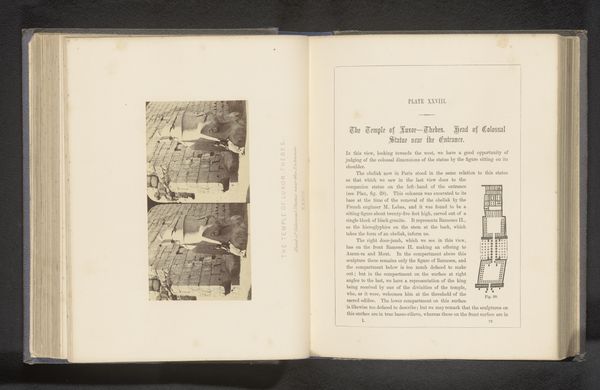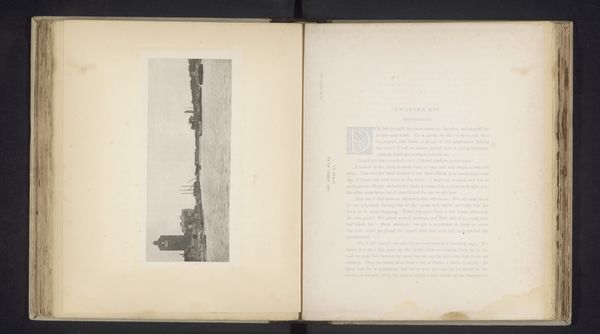
print, photography, albumen-print
#
aged paper
#
homemade paper
#
paperlike
# print
#
sketch book
#
landscape
#
photography
#
personal sketchbook
#
fading type
#
ancient-mediterranean
#
orientalism
#
thick font
#
cityscape
#
paper medium
#
albumen-print
#
historical font
#
columned text
Dimensions: height 72 mm, width 144 mm
Copyright: Rijks Museum: Open Domain
Curator: Here we have "Uitzicht op Caïro met in de verte piramiden," or "View of Cairo with Pyramids in the Distance," a print made before 1862 by Francis Frith. It’s an albumen print showcased in an open book. Editor: What strikes me immediately is the rather melancholic atmosphere; the faded sepia tones, the somewhat obscured view...it evokes a sense of distance, not just geographical but temporal. Curator: Absolutely. Let’s delve into the visual construction. The composition emphasizes layers—the immediate structures in the foreground are dark, almost silhouetted. There’s an intricate play between light and shadow here. Editor: And those structures—what do they signify? They seem almost fortress-like. Are they representative of a power dynamic, the city's defenses maybe? I notice also, just peeking from behind are the pyramids. Symbols of Egypt. It gives a dreamlike effect to the eye as the photo blends reality with mythology. Curator: I believe that Frith is engaging with the tradition of orientalist painting. While these 'fortresses' are balconies or the rooftops of houses the pyramids offer both physical presence, and as you note, their iconic value, immediately signal "Egypt,". Their form is radically different, too—a man-made structure with strict geometrical structure imposed onto the organic shapes of Cairo Editor: Exactly. He captures Cairo in a very unique manner, but also exoticized, playing on preconceived notions of what the region meant to Western audiences. This interplay, however, invites a more nuanced viewing experience that balances documentation and exotic fantasy. Curator: One could argue that by presenting it as a print within a book, Frith also comments on modes of circulation and reception. It becomes almost like a traveler's memento, designed for intimate viewing and reflection, even contemplation. Editor: I agree. It really compels us to look closer and consider how our understanding of a place is often shaped by fragments, incomplete narratives, and perhaps romanticized visions. This piece isn’t just a snapshot; it's an inquiry.
Comments
No comments
Be the first to comment and join the conversation on the ultimate creative platform.
